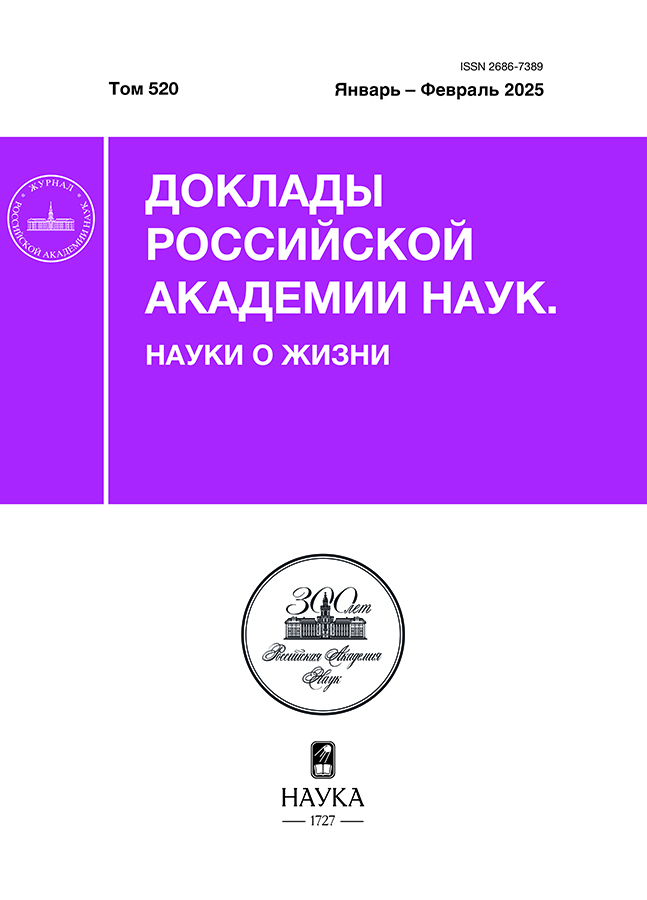GALA3-containing modular nanotransporters are capable of delivering Keap1 monobody to target cells and inhibiting the formation of reactive oxygen species in the cells
- 作者: Khramtsov Y.V.1, Bunin E.S.1, Ulasov A.V.1, Lupanova T.N.1, Georgiev G.P.1, Sobolev A.S.1,2
-
隶属关系:
- Institute of Gene Biology, RAS
- Lomonosov Moscow State University
- 期: 卷 520, 编号 1 (2025)
- 页面: 159-163
- 栏目: Articles
- URL: https://ter-arkhiv.ru/2686-7389/article/view/682070
- DOI: https://doi.org/10.31857/S2686738925010268
- EDN: https://elibrary.ru/svxdcs
- ID: 682070
如何引用文章
详细
In the previously created modular nanotransporter (MNT) capable of delivering a monobody to Keap1 into the cytosol, the translocation domain of diphtheria toxin (DTox) was replaced by the endosomolytic peptide GALA3. It was found that this substitution more than doubles the lifetime of MNT in the blood. Using confocal microscopy, it was shown that MNT with GALA3 was internalized into AML12 cells mainly due to binding to the epidermal growth factor receptor, and is also able to exit from endosomes into the cytosol. Using cellular thermal shift assay, it was shown that MNT with GALA3 and MNT with DTox are equally effective in disrupting the formation of the Nrf2 complex with Keap1, which led to similar protection of AML12 cells from the action of hydrogen peroxide. The obtained results allow not only to optimize the systemic use of MNT, but can also serve as a basis for creating agents aimed at treating diseases associated with oxidative stress.
全文:
作者简介
Y. Khramtsov
Institute of Gene Biology, RAS
Email: alsobolev@yandex.ru
俄罗斯联邦, Moscow
E. Bunin
Institute of Gene Biology, RAS
Email: alsobolev@yandex.ru
俄罗斯联邦, Moscow
A. Ulasov
Institute of Gene Biology, RAS
Email: alsobolev@yandex.ru
俄罗斯联邦, Moscow
T. Lupanova
Institute of Gene Biology, RAS
Email: alsobolev@yandex.ru
俄罗斯联邦, Moscow
G. Georgiev
Institute of Gene Biology, RAS
Email: alsobolev@yandex.ru
Corresponding Member of the RAS
俄罗斯联邦, MoscowA. Sobolev
Institute of Gene Biology, RAS; Lomonosov Moscow State University
编辑信件的主要联系方式.
Email: alsobolev@yandex.ru
Academician of the RAS
俄罗斯联邦, Moscow; Moscow参考
- Bellezza I., Giambanco I., Minelli A., et al. // Acta Mol. Cell Res. 2018. V. 1865(5). P. 721–733.
- Hayes J.D., Dinkova-Kostova A.T. // Trends Biochem. Sci. 2014. V. 39(4). P. 199–218.
- Yamamoto M., Kensler T.W., Motohashi H. // Physiol. Rev. 2018. V. 98(3). P. 1169–1203.
- Robledinos-Anton N., Fernandez-Gines R., Manda G., et al. // Oxid. Med. Cell Longev. 2019. V. 2019. 9372182.
- Ngo V., Duennwald M.L. // Antioxidants. (Basel). 2022. V. 11(12).
- Taguchi K., Kensler T.W. // Arch. Pharm. Res. 2020. V. 43(3). P. 337–349.
- Patra U., Mukhopadhyay U., Sarkar R., et al. // Antivir. Res. 2019. V. 161. P. 53–62.
- Olagnier D., Farahani E., Thyrsted J., et al. // Nat. Commun. 2020. V. 11. 4938.
- Khramtsov Y.V., Ulasov A.V., Slastnikova T.A., et al. // Pharmaceutics. 2023. V. 15. 2687.
- Khramtsov Y.V., Ulasov A.V., Rosenkranz A.A., et al. // Dokl. Biochem. Biophys. 2018. V 478. P. 55–57.
- Aloia T.A., Fahy B.N. // Expert Rev. Anticancer Ther. 2010. V. 10. P. 521–527.
- Nikitin N.P., Zelepukin I.V., Shipunova V.O., et al. // Nat. Biomed. Eng. 2020. V. 4(7). P. 717–731.
- An Q., Lei Y., Jia N., et al. // Biomol. Eng. 2007. V. 24. P. 643–649.
- Pfister D., Morbidelli M. // J. Contr. Release. 2014. V. 180. P. 134–149.
- Rosenkranz A.A., Ulasov A.V., Slastnikova T.A., et al. // Biochemistry (Moscow). 2014. V. 79(9). P. 928–946.
- Li C., Cao X.W., Zhao J., et al. // J. Membr. Biol. 2020. V. 253(2). P. 139–152.
- Khramtsov Y.V., Ulasov A.V., Rosenkranz A.A., et al. // Phramaceutics. 2024. V. 16. 1345.
- Khramtsov Y.V., Ulasov A.V., Rosenkranz A.A., et al. // Phramaceutics. 2023. V. 15. 324.
- Murphy M.P., Bayir H., Belousov V., et al. // Nat. Metab. 2022. V. 4(6). P. 651–662.
- Thurber G.M., Dane W.K. // J. Theor. Biol. 2012. V. 314. P. 57–68.
补充文件













